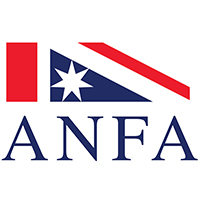Address by John Howard
Transcript of the Prime Minister
The Hon John Howard MP
National Flag Day Address
Melbourne
3 September 2001
Thank you very much to the Governor of Victoria John Landy, the Premier Mr Steve Bracks, the Deputy Leader of the Opposition, Simon Crean, the newly elected Lord Mayor of Melbourne, Sir Gustav Nossal and my parliamentary colleagues, ladies and gentlemen.
It’s great to be back in the forecourt of the Exhibition Building here in Melbourne. And it’s particularly pleasing that I return on the 100th anniversary of the first raising on the 3rd of September in the year 1901 of the flag chosen as a result of a wide competition to represent the newly created Commonwealth of Australia. There were some 32,823 entries received in that competition from all over the world. I understand that one of the entries came from an unnamed State governor and there were five people who shared the winning of that competition, and they were Annie Dorrington who was a well known artist from Perth; Ivor Evans a 14 year old Melbourne school boy who’s father owned a flag making business; Lesley Hawkins an 18 year old from Leichhardt in Sydney who was apprenticed to a Sydney optician at the time; Eggbert Nutall an architect with the Melbourne and Metropolitan Board of Works; and William Stevens, a first officer with the Union Steamship Company of New Zealand.
And as all of us who have presented probably hundreds if not thousands of flags at various schools ceremonies, the original flag we will know, we will know that the original flag chosen in 1901 featured a six-pointed Commonwealth star representing the Australian states, and a seventh point was added in 1908 to represent the territories, the first of which was Papua. It is true that it took a long time before there was unambiguous acceptance of the flag chosen as one central undeniable national emblem of Australia.
But it is equally true that from the very early times, after the choosing of the flag in 1901, it began to be very widely recognised particularly by the Australian military forces. This flag is flown on the ships of the Royal Australian Navy since its inception in 1911. In 1914 the flag was flown over HMAS Australia in its famous engagement which sank the German raider the Emden near Cocos Island. It was carried by our soldiers at Gallipoli. It was used in the famous Cooee march from Gilgandra in country New South Wales in 1915. It was often flown on the Western Front during WW1. And there is of course in WWII, the famous Changi Flag, the proud possession of Captain Strawbridge who kept it hidden inside a calico bag in his pillow during his time in the Changi prison camp, risking execution if it were found. This flag became a symbol of hope for many men in the camp and was proudly flown when the camp was liberated.
And in 1945 the Australian flag was raised in Singapore following the Japanese surrender. Australian prisoners had made an Australian flag in secret and this was the first flag to fly over a liberated Singapore after the Japanese defeat. And that particular flag is now held at the Australian War Memorial.
So it has a long history of passionate identification with a separate Australian identity. My personal commitment to the flag as an appropriate symbol of the Australian nation is based both on history and tradition, but also recognition of an historical truth. It represents the special characteristics of the Australian identity with the Southern Cross and it acknowledges our history with the Union Jack in the corner of the flag which in turn itself is a combination of the symbols of England, Scotland and Ireland and Wales. It is appropriate that we express our respect for the Australian national flag as a symbol of the achievements of the Australian nation and on an occasion such as this it is appropriate to reflect on what has been achieved over the last 100 years. And I would have thought that everybody who participated either as an athlete or as a spectator, either in person or on television, would have been greatly moved and warmed by the passionate commitment of Australian audiences both to Advance Australia Fair and the Australian National Flag at the Olympic Games in Sydney last year. And having just had the great privilege last Saturday night, and I say this not with any trepidation before a Victorian audience, but having had the great privilege last Saturday night to see the magnificent victory of the Australian Wallabies over the All Blacks in the Bledisloe Cup, the obvious warmth, the obvious warmth that Australian crowds have toward the Australian flag and the Australian national anthem make it very plain to me that they will indefinitely remain great unifying national symbols of all of the Australian people.
So I am really delighted to be here today. I congratulate the Australian National Flag Association on its support for the Australian flag and its commitment to the continuity of the history of this country. Its traditions, its past, its present as well as its future and long may that beautiful flag fly over the Commonwealth of Australia
